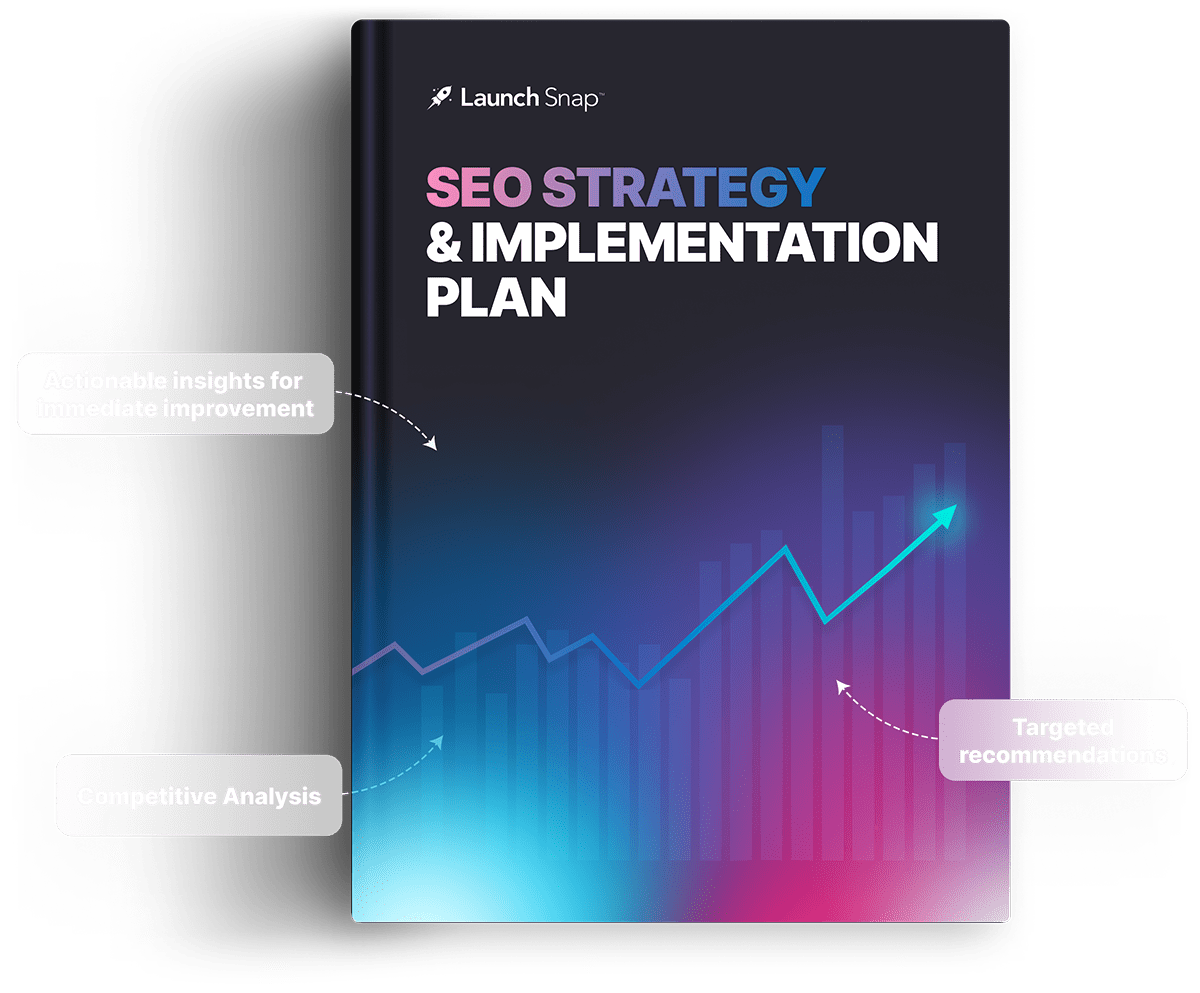How to Select B2B SEO Keywords
Search Engine Optimization is the quickest way to the top of the organic search results pages, or SERPs. But, finding the SEO keywords to yield the right leads for your marketing strategy, your target market, and your budget, is a complex and often highly subjective process. In this article will I take you through that process from start to finish so you can transform your non-performing content into high-traffic and lead-driving assets.

Deep Dive into Your Audience
In order to really understand your audience you need to you to jump into their shoes, to live a day in their life. When you understand their pains, motivations and how they consume content online, you can tailor your SEO strategy to effectively engage with their professional environment and aspirations. It’s about building a narrative and choosing keywords which map to that journey, so when they find your content it speaks directly to who they are, what they need and where they’re going.
Profile Your Ideal Customers:
Start by building detailed profiles of your ideal B2B customers. This includes basics such as industry sector, job function, company size and geography, but goes deeper into their day to day life. Break down the specific example of what their industry looks like, the challenges they face on a daily basis, and the objectives they are working towards. This detailed profiling gives you the basis to create a targeted SEO strategy, which maps to their reality.
Pin Point Their Needs and Challenges
Next, you’ll want to dig deeper. What are your customers least favorite parts of their jobs? Why? Are the tasks time consuming or mundane? Do they lack insights or key data they need to make better decisions? What do they think would help them overcome these challenges? Where would they start to look for solutions? At some point, almost everyone will end up on Google during some part of their research process to solve their business challenges. Knowing answers to these questions will give you insight into the types of phrases they will search for (and you can optimize for.)
Talk to Your Customers
Finally, the most in-depth insights about your target audience often won’t come from the data alone. Direct engagement with your target audience can be one of your most valuable sources of information of all. Surveys, interviews, focus groups — no matter how you execute it, getting the feedback of your target audience themselves can reveal invaluable information about their preferences, behaviors, and the effectiveness of the content and SEO strategy you already have in place.
In this way, you can continue to refine and adjust your understanding of your audience, ensuring that your B2B SEO strategy remains directly in line with their needs and preferences as those evolve over time. Pamphlet says that it’s important to continue the dialogue that you’ve started, using what you’ve learned to inform changes and improvements to your strategy, your content, or even what products or solutions you offer. Keep this ongoing dialogue alive and you’ll be able to keep your strategy that much more fresh, dynamic, and — most importantly of all — effective at helping your B2B clients to handle the real-world challenges that they face on a regular basis.
Industry and Competitor Insights
While knowing your audience is the best foundation for any SEO strategy, another great place to look is your competitors and overall industry. By knowing what phrases and keywords your competitors are optimizing for, you can back into additional SEO opportunities plus identify trends and terms you may have missed. Tools such as SpyFu, SEMrush and Ahrefs can help analyze your competitors’ websites. By putting that data all together, you can get a sense of the overall industry.
Tip #1: Jargon
In B2B SEO, it’s important to stay up to date on current technology and industry jargon. Search terms can often be highly technical or a new marketing term invented by a competitor.
Keyword Research Tools
There’s tons of keyword research tools out there including Google Keyword Planner, SEMrush, Spyfu, or Ahrefs. But we’ve found these to be less effective in initially finding ideal B2B search queries than the old fashion approach of rolling up your sleeves, imagining you are your customer, and search for solutions to their challenges.
Tip #2: Keep it Real
Use an incognito window for your searches.
If you start to type your query, Google will automatically provide suggestions as you type. For instance, entering “Increase franchise” might prompt Google to complete your query with options related to profitability, scaling, and efficiency. These auto-populated suggestions are based on what other people search and they give you important information:
- they show you relevant, long-tail search queries
- they show the most popular searches
- they identify potential SEO-rich snippets

Try to find a balance between cruising down research rabbit holes, documenting your findings, and not getting overwhelmed. Start small with just 15-30 minutes of research and then move on. You can always come back to do more.
Generating Keyword Variations:
Now is when we love to break out those keyword research tools. We’ve used them all and tend to prefer the simple and free, Google Keyword Planner you can access through any Google Ads account. Enter your top keywords and use the “Discover new keywords” function to learn what else Google suggests to make sure you didn’t miss any synonyms or related terms. The results will typically skew towards shorter-tail keywords and not everything will be relevant, but you might find that a variation on a keyword not in your list has considerably more searches than the version you have.
From here, take your mega list of keywords and put them into “Get search volume and forecasts” tool. This will give you the search volumes, competition, historical metrics, and forecasts for each keyword. Plus Google does try to do some grouping. Remove any irrelevant or overly broad keywords and segment them into both topic and intent groups.
Prioritizing B2B Keywords by Intent and Relevance
It’s important that you connect what your customers are searching for with the solutions your business provides.
Search Intent:
There are several different types of search queries, such as informational, navigational, and transactional. Knowing the difference and creating content that aligns with each query will help you better connect with your prospects.
Align with Your Offerings:
Select keywords that either reflect the services, products, or information your business provides or can be leveraged to back into your offerings. An example of this is a company that specializes in a new kind of technology solution but finds that potential customers are people are still searching for the old one. Create an article with a title along the lines of “5 Reasons XYZ technology doesn’t work…and what to do instead.”
Mapping Keywords to the B2B Buyer’s Journey
Use content to addresses the different stages of the buyer’s journey. These include:
- Recognizing a problem or need
- Defining the problem
- Researching solutions
- Requesting a quote
- Comparing providers
- Completing the purchase
- Evaluating the process
Create a logical progression from one step to the next, taking the prospect on a curated journey through the process with the information they need most at each step. Consider marketing automation to help with this.
Search Volume vs. Competition Analysis
In an ideal world, your keywords will have a high number of monthly searches and low competition. But in B2B SEO, search volumes and competition will often say “low” which is not always accurate. This discrepancy is because these tool are comparing B2B keywords to the world of B2C keywords where the numbers for both volume and competition are exponentially higher. Sometimes you just need to google the keyword and look at the competition yourself. If you are up against dozens of gigantic websites like The New York Times or Wikipedia that you are likely to never surpass, look for one with smaller ranking websites.
It’s possible that some of the best rich snippet and long tail keywords will show no search volume. Don’t always follow the numbers. Follow your gut.
Focus on the Achievable:
Prioritize keywords that provide a realistic opportunity for ranking, especially those niche terms that could drive targeted traffic to your site.
Embrace Long-Tail B2B Keywords
In B2B, long-tail keywords are often some of your best opportunities. Not only can you potentially get rich snippets they often show more accurate intent. Look for opportunities to address specific questions that are relevant to your potential customers. The search volumes might be lower but they are more likely to result in a conversion.
Look for Transactional B2B Keywords
Transactional keywords include words such as “buy,” “subscribe,” “download,” or “register.” The represent someone that is in the middle or bottom of the funnel and is getting closer to making a purchasing decision. Make sure to map those keywords to landing pages that are also optimized for those terms to improve conversion rates.
Build Your Brand
It’s easy to get so wrapped up in making SEO content that you can lose sight of your ultimate goals. Remember to always come back to your company, your offerings and your thought leaders. It doesn’t have to be a huge sales pitch in every article, but a quote here or there, a link your solution, or a call to action for a case study can go a long way towards reinforcing your brand identity.
Tip #3: Shift it Up
Don’t make your CTAs cookie cutter. Make calls to action relevant to the content the visitor originally came for or has just consumed.
Set up Performance Monitoring
This is another great place to bring in tools like SEMrush, Ahrefs, Google Search Console, or customized reports. Try to retain the groupings you originally created so you aren’t overwhelmed by a report of random keywords all thrown together. Remember, keywords work together. So watch the big picture impact of the group over time. Alternatively, we’ve worked with clients who’ve just wanted to track the exact ranking of a handful of very specific terms. Find what works for you and then adapt, optimize and continue to create new content to keep your SEO strategy fresh.
Keyword Confusion?
If SEO feels overwhelming or you aren’t sure if you’re on the right track, we can help. At LaunchSnap, we love digging into SEO data, following the trails to see where the lead and uncovering the opportunities. Most of all, we love watching out clients see the results. Let’s see what we can rank for together!



